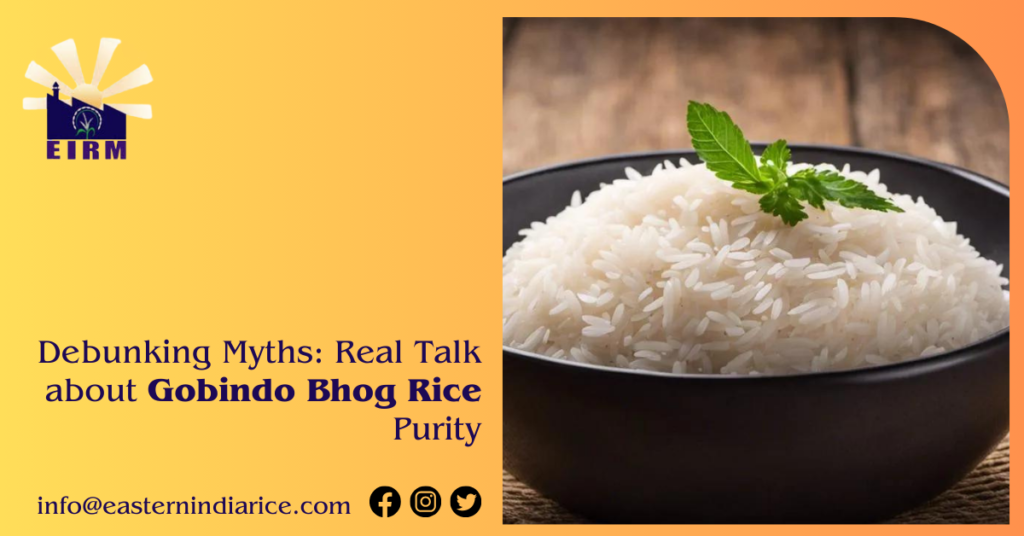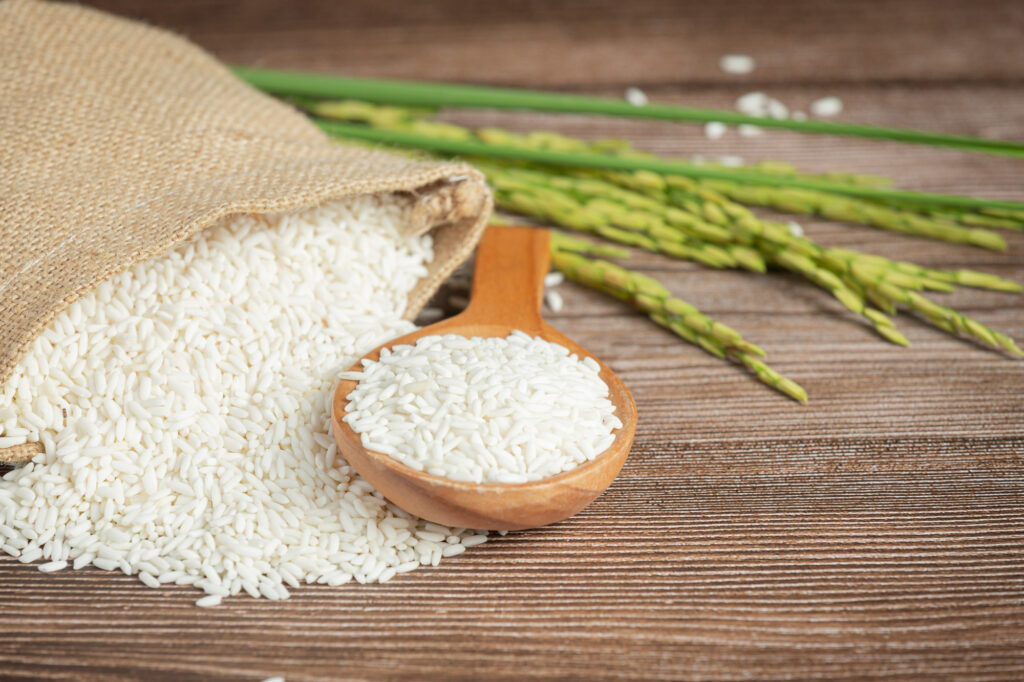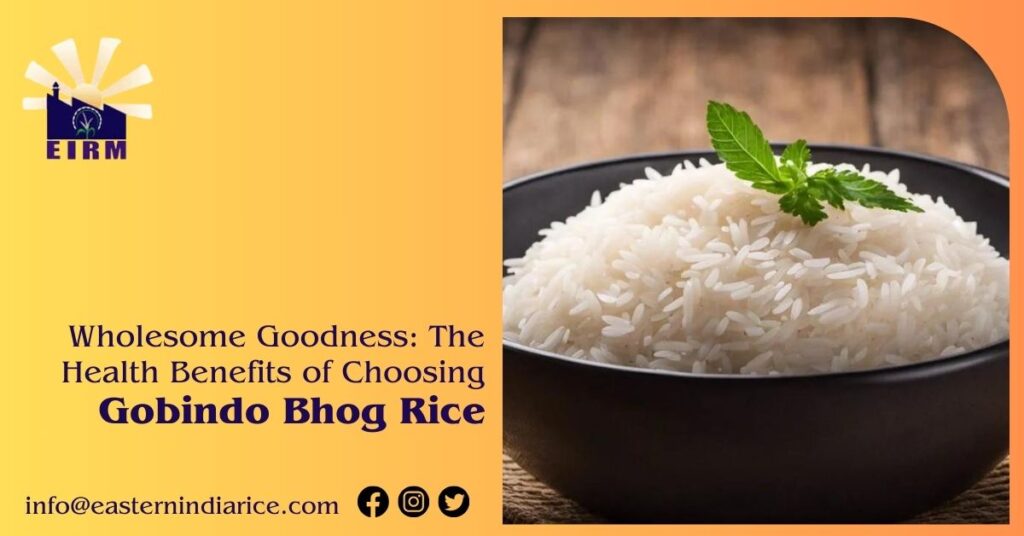Gobindo Bhog rice, the fragrant king of grains, isn’t just your average kitchen filler. It’s a legend whispered in Bengali kitchens, fit for royal feasts, and now gracing homes across India.
But with its growing fame, questions arise: Is all Gobindo Bhog the same?
Can you spot the real deal among imposters?
Worry not, curious cooks! This blog is your guide, busting myths and arming you with the knowledge to shop with confidence.
Let’s uncover the truth about Gobindo Bhog rice, one misconception at a time!
Myth #1: All Gobindo Bhog rice is created equal.
Reality: Just like diamonds, not all Gobindo Bhog rice sparkles with the same brilliance. While the Geographical Indication (GI) tag protects Gobindo Bhog grown in specific districts of West Bengal using traditional methods, variations exist within this protected zone. Unscrupulous practices like mixing with cheaper rice varieties dilute the true essence of this culinary treasure.
Myth #2: Short grains mean it’s not genuine Gobindo Bhog.
Reality: While longer grains (4.5mm to 5mm) are considered ideal, shorter grains don’t automatically disqualify them. Factors like age, storage conditions, and even specific growing regions can influence grain size. However, a significant mix of short grains is a potential red flag.
Myth #3: Strong aroma always equals pure Gobindo Bhog.
Reality: The true fragrance of Gobindo Bhog is subtle and evocative, like freshly cut hay and pandan leaves. A pungent or artificial aroma suggests chemical enhancements or a mix with other varieties. Trust your nose!
Myth #4: Price is the ultimate indicator of purity.
Reality: While high-quality Gobindo Bhog rice certainly doesn’t come cheap, price alone shouldn’t be your sole determinant. Look for trusted brands like MALIK DEENAR & DOUBLE D.P., known for their ethical sourcing and stringent quality control, ensuring purity even at a premium price point.
Myth #5: You can’t detect adulteration at home.
Reality: Armed with knowledge, you can become a rice detective! Here’s your home-based toolkit:
- Translucence Test: Hold a grain up to the light. Genuine Gobindo Bhog is pearly and translucent, not chalky or opaque. This indicates proper milling and intact nutrients.
- Touch Test: Run your fingers through the grains. They should feel smooth and separate easily, not clumpy or sticky. This reflects proper drying and storage.
- Cooking Test: Cook a small batch and observe the texture. Fluffy, separate grains are a good sign, while mushiness or uneven cooking points towards adulteration.
Empowering Choices: Protecting Your Culinary Experience
With the myth-busting tools in your arsenal, you can confidently navigate the world of Gobindo Bhog rice. Here are some additional tips for informed choices:
- Seek brands with a proven track record: Choose established brands like MALIK DEENAR & DOUBLE D.P. with a reputation for ethical sourcing and quality control.
- Look for certifications: Opt for brands displaying the GI tag and FSSAI mark, assuring adherence to safety and quality standards.
- Transparent packaging is your friend: Choose brands that offer transparent packaging with batch codes or traceable QR codes for verification.
Beyond the Hype, Embracing the Essence
Choosing pure Gobindo Bhog rice isn’t just about avoiding adulteration; it’s about embracing the heritage, the unique flavor profile, and the culinary legacy of Bengal. It’s about savoring the subtle aroma, the fluffy texture, and the way it elevates every dish it graces. So, equip yourself with knowledge, make informed choices, and embark on a culinary journey where every bite of Gobindo Bhog rice is a celebration of purity, taste, and tradition. Remember, in a world of culinary hype, choosing the real deal is your ultimate act of culinary heroism. Go forth, champions, and bring home the true essence of Gobindo Bhog rice!






